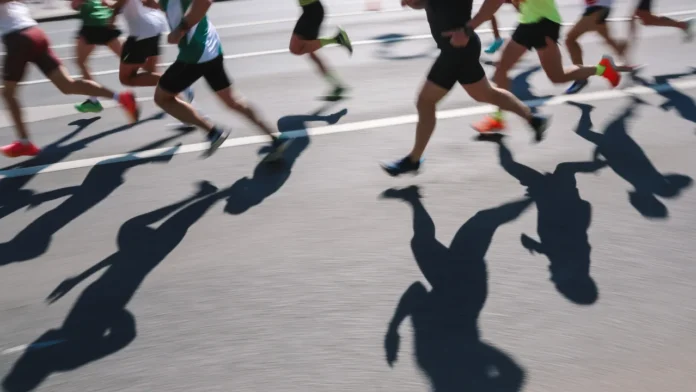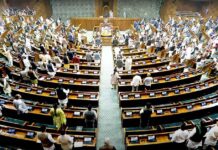Sri Vijaya Puram witnessed a unique run that combined fitness with social responsibility as hundreds of students and faculty from local nursing institutions participated in an HIV/AIDS awareness marathon. Organised jointly by the Red Ribbon Club of the ANM Training School, the School of Nursing, and the Andaman and Nicobar AIDS Control Society (ANACS), the event began at the historic National Memorial Cellular Jail and concluded at Flag Point, covering one of the city’s most iconic routes.
The marathon was flagged off by Subroto Saha, Project Director of ANACS, who underlined the importance of spreading awareness about prevention, care, and treatment in the continuing fight against HIV/AIDS. The initiative reflected both symbolic and practical goals, using a physical endurance event to highlight resilience and responsibility, while spreading the message to local communities through visibility and participation.
Nursing students and ANM trainees formed the majority of the participants, joined by faculty members who walked and ran alongside them. Carrying placards and banners with messages of awareness, the participants turned the event into a moving campaign. The slogans, visible to passersby along the route, emphasised early testing, safe practices, and the importance of eliminating stigma associated with the disease.
The Cellular Jail served as a significant starting point for the marathon. Once a colonial prison and now a national memorial, it offered a powerful backdrop to an event aimed at creating freedom from social taboos and misinformation. As runners set off from its gates, the symbolism of linking the struggle for independence with the fight for health and dignity was unmistakable. The race concluded at Flag Point, another landmark in Port Blair, where participants took a pledge to continue spreading awareness and contribute to building an HIV-free society in the islands.
For the organisers, the marathon was more than a symbolic gesture. It formed part of a wider strategy by ANACS to engage youth in campaigns against HIV/AIDS. By involving students from nursing institutions, the event also emphasised the role of healthcare workers as both professionals and community leaders. These students, who will eventually join the health workforce, are being positioned as advocates of awareness in their personal and professional circles.
The choice of a marathon reflected an attempt to combine awareness with fitness, drawing parallels between maintaining a healthy lifestyle and preventing disease. Events of this kind not only spread knowledge but also foster community spirit, as they involve both direct participants and the spectators who encounter them along the route.
The impact of the marathon was visible in the interactions it created. Along the course, residents and tourists paused to watch the group of runners, taking in the messages displayed on banners and T-shirts. For many, the event served as a reminder that HIV/AIDS, though often absent from mainstream discussions, remains a public health concern requiring vigilance and compassion.
The concluding pledge at Flag Point served as the most striking moment of the event. With students and faculty gathered together, the collective affirmation of commitment to awareness and prevention gave the marathon a purposeful conclusion. The pledge echoed ANACS’s larger vision of reducing new infections and ensuring that those living with HIV receive care without stigma.
HIV/AIDS has long been associated with misconceptions, stigma, and discrimination, often creating barriers to effective treatment and prevention. The organisers aimed to address this by using the visibility of the marathon to normalise conversations around the subject. By involving nursing students, the campaign also ensured that future healthcare workers are sensitised to the human dimensions of the disease.
In the Andaman and Nicobar Islands, the fight against HIV/AIDS faces specific challenges. The scattered geography and remote locations often limit healthcare access, making awareness all the more crucial. Initiatives like the marathon serve to bridge these gaps by taking the message beyond health centres and into public spaces. They also highlight the role of institutions like ANACS in creating sustained programmes that combine prevention, care, and advocacy.
The involvement of the Red Ribbon Club was particularly significant. These clubs, set up in educational institutions across the country, work under the National AIDS Control Programme to harness the energy of youth for spreading awareness. In Port Blair, their collaboration with ANACS and nursing institutions reinforced the effectiveness of partnerships in public health campaigns.
Beyond the immediate objectives, the marathon also carried symbolic value. Choosing a run from Cellular Jail to Flag Point embedded the event within the historical and cultural context of the islands. Both landmarks are associated with resilience and freedom, themes that resonate with the broader aim of overcoming the stigma attached to HIV/AIDS. By connecting the past struggle for political independence with the present struggle for social health, the organisers created an event that was at once local, national, and global in its implications.
The HIV/AIDS awareness marathon in Sri Vijaya Puram therefore stood out as an event where physical activity, symbolism, and social messaging converged. It not only mobilised nursing students but also drew the attention of the wider community, reinforcing the idea that prevention and awareness are shared responsibilities.
As participants dispersed after taking their pledge at Flag Point, the broader message remained clear: the fight against HIV/AIDS is far from over, and awareness continues to be the strongest defence. Through such initiatives, the islands are not only strengthening their public health response but also contributing to the nationwide effort to create a society where prevention, care, and dignity go hand in hand.





